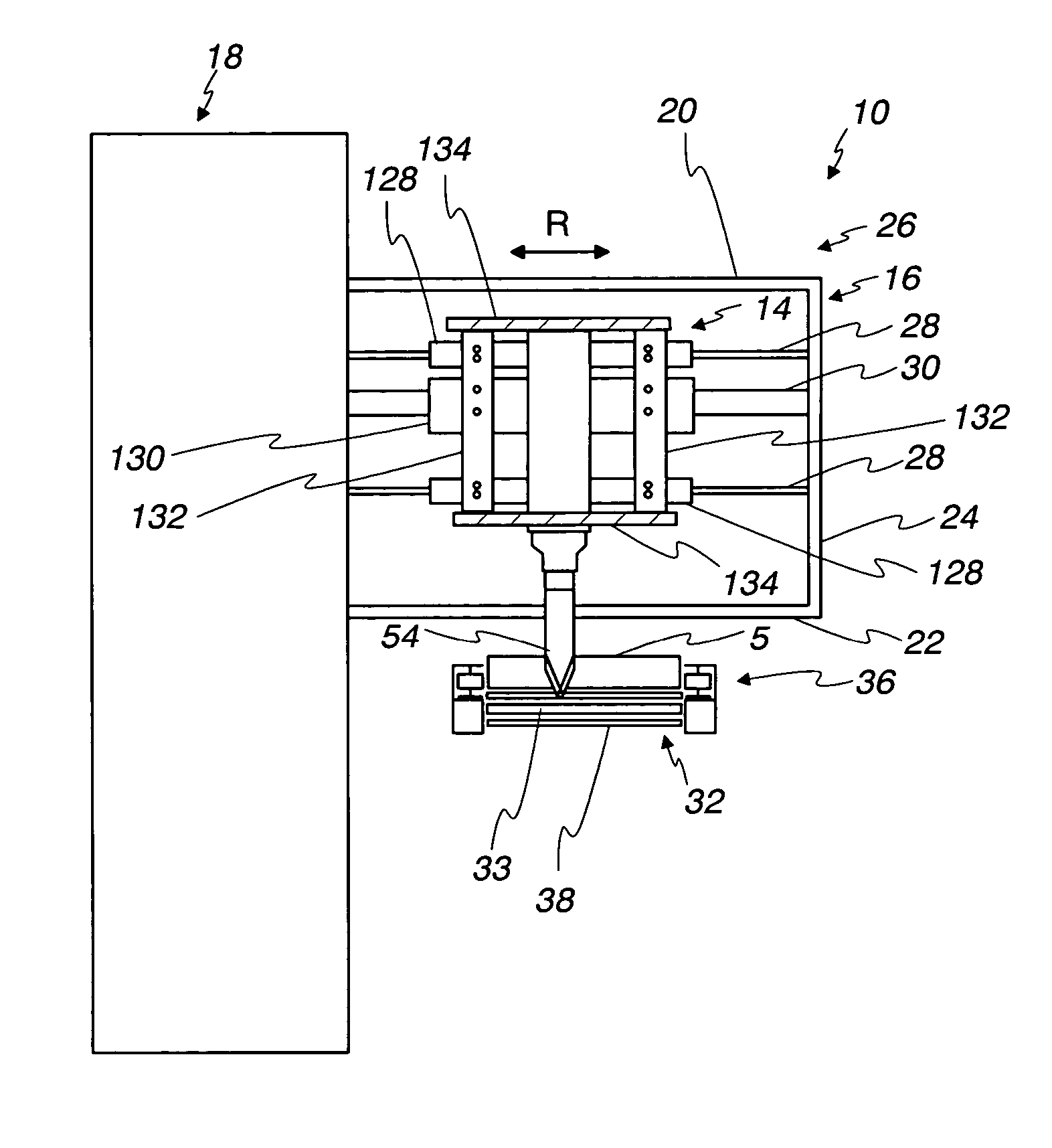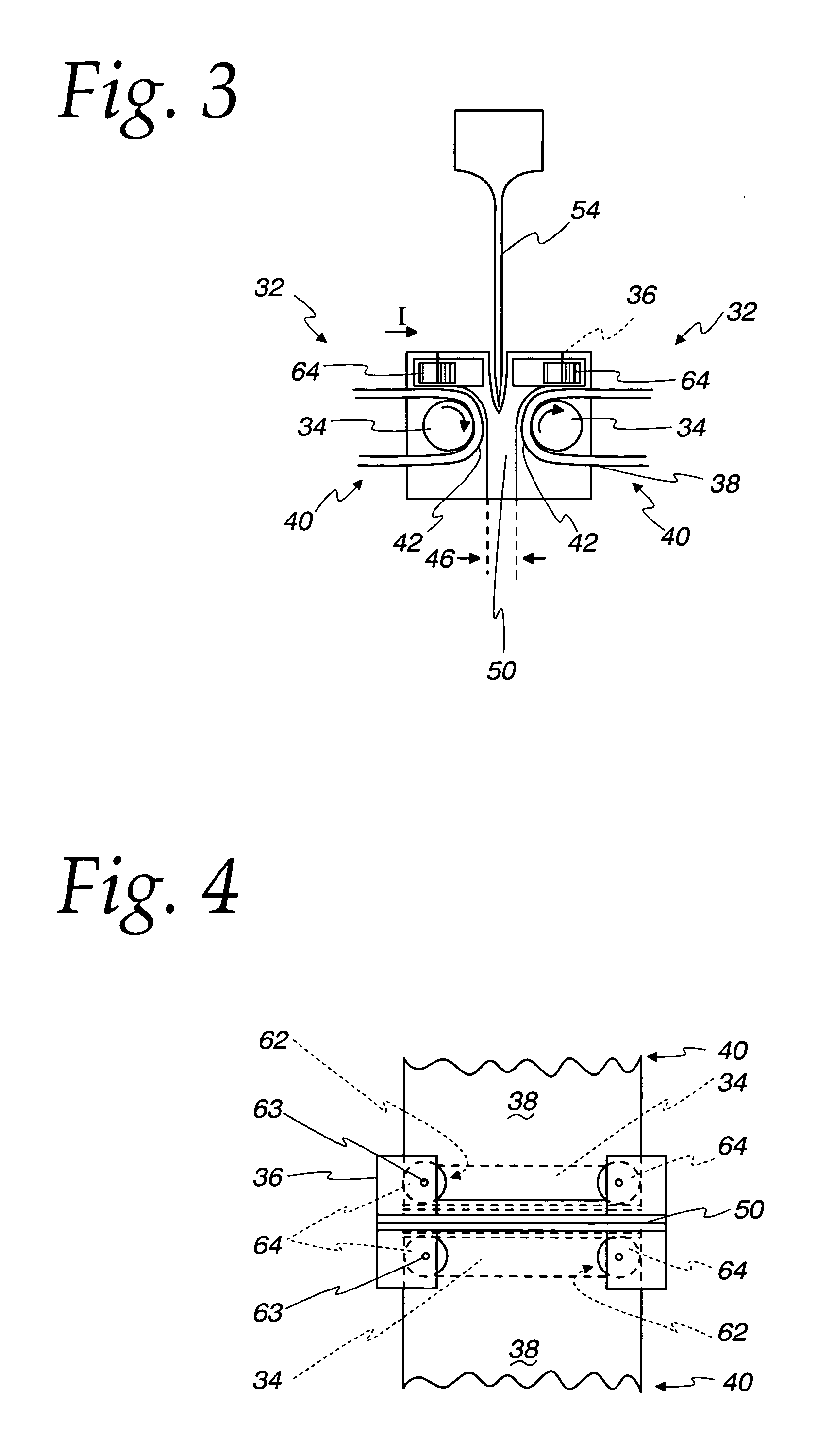Ultrasonic slitter
a technology of ultrasonic slitter and slitter blade, which is applied in the direction of metal working apparatus, meat shaping/cutting, manufacturing tools, etc., can solve the problems of excessive mechanical vibration, poor cutting, and limited cutting speed of guillotine blades, so as to increase the engagement of food products
- Summary
- Abstract
- Description
- Claims
- Application Information
AI Technical Summary
Benefits of technology
Problems solved by technology
Method used
Image
Examples
Embodiment Construction
[0019] Referring initially to FIG. 1, the invention is preferably embodied in a bidirectional ultrasonic slitter 10 including a translatable carriage 14 supported on a frame 16 on a base 18. As described below, the slitter 10 forms transverse cuts in a food product slab 5 supported on a conveyor assembly 32 that includes an anvil 36 disposed between a pair of conveyors.
[0020] The structure of the apparatus may take various different forms. One particular structure is described below and shown in the drawings for purposes of example.
[0021] The illustrated base 18 includes operator controls and provides power for translation to the carriage 14. The illustrated frame 16 includes horizontal transverse top and bottom members 20 and 22 supporting a vertical side member 24. Guide rails 28 and drive rail 30 extend horizontally and parallel to one another transversely over the conveyor, supported at opposite ends by the base 18 and side member 24 respectively. The carriage 14 is slidably s...
PUM
| Property | Measurement | Unit |
|---|---|---|
| frequency | aaaaa | aaaaa |
| included angle | aaaaa | aaaaa |
| included angle | aaaaa | aaaaa |
Abstract
Description
Claims
Application Information
 Login to View More
Login to View More - R&D
- Intellectual Property
- Life Sciences
- Materials
- Tech Scout
- Unparalleled Data Quality
- Higher Quality Content
- 60% Fewer Hallucinations
Browse by: Latest US Patents, China's latest patents, Technical Efficacy Thesaurus, Application Domain, Technology Topic, Popular Technical Reports.
© 2025 PatSnap. All rights reserved.Legal|Privacy policy|Modern Slavery Act Transparency Statement|Sitemap|About US| Contact US: help@patsnap.com



